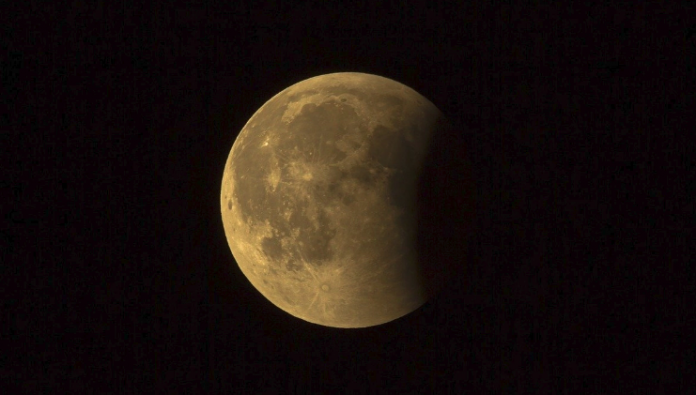HIGHLIGHTS
. The penumbral lunar eclipse this week won’t be visible in the US
. The total duration of the eclipse is set to be 4 hours and 5 minutes
. A total of four lunar eclipses are set to occur in 2020
Lunar eclipses are much more common than solar eclipses, but are still a sight to behold. There are three types of lunar eclipses – total, partial, and penumbral. Total lunar eclipses are the most dramatic, while penumbral lunar eclipses are the most common. This year, four will take place. The first penumbral lunar eclipse of 2020 will occur tomorrow, i.e., January 10. NASA has coined the term ‘Wolf Moon Eclipse’ for this celestial event, and it will be visible in India this time. In fact, countries across Asia, Africa, and Europe will be able to see the lunar eclipse, and the total duration is set to be 4 hours and 5 minutes. This is the first of the four penumbral lunar eclipses (called chandra grahan in Hindi) that are set to occur this year.
How does a lunar eclipse occur?
The simple answer is – a lunar eclipse occurs when our Moon passes directly behind the Earth, and the Earth occludes some or all sunlight reaching the Moon’s surface. This can only occur when our Sun, Moon, and the Earth are closely aligned – in what is called a syzygy – and on the night of a full moon. There are more than one type of lunar eclipse, and details of those can be read below.
What are the types of lunar eclipses?
There are three types of lunar eclipses – penumbral, partial, and total. To under stand them, one needs to understand two types of shadows – umbra and penumbra. The region of shadow caused when the Earth completely occludes the Sun’s direct radiation is called umbra, while the region where the Earth partially blocks sunlight is called penumbra. A penumbral lunar eclipse occurs when the Moon falls in this penumbra region of Earth’s shadow from sunlight. This is the most common type of lunar eclipse, and can occur several times a year, as is the case in 2020. A rare type of penumbral lunar eclipse is a total penumbral lunar eclipse, where the entire Moon is in the penumbra region of Earth’s shadow. A partial lunar eclipse occurs when only a portion of the Moon falls in the umbra region of Earth’s shadow. Finally, a total lunar eclipse occurs when the entire Moon is in the Earth’s umbra.
What is a penumbral lunar eclipse?
A penumbral eclipse occurs when the Earth passes between the Moon and the Sun. It obscures the Sun’s light for a specific amount of time, causing the Earth’s shadow to fall on the Moon. Unlike other eclipses, the penumbral eclipse is a very subtle celestial event to observe, though it is interesting to see the larger than usual appearance of the Moon, and the shifts in shadow during the 4 hour period. When the eclipse is at its peak, the Moon’s outer disc will fall under the Earth’s shadow, but not completely. At maximum eclipse, 90 percent of the Moon will be partially shaded by the Earth. The Moon will appear dim, and won’t be as bright as on other days. As mentioned, there will be three more penumbral lunar eclipse this year – June 5, July 5, and November 30.
January 2020 lunar eclipse date and timings?
As mentioned, the penumbral lunar eclipse of January 2020 will occur on January 10 i.e. this Friday. According to Time and Date, the lunar eclipse India time will last from 10:37pm IST on January 10 to 2:42am IST on January 11.
Where to watch the penumbral lunar eclipse on January 10, 2020?
As mentioned, the eclipse will be visible in India, and countries across Asia, Africa, and Europe will be able to see the lunar eclipse as well. Unfortunately, the penumbral lunar eclipse won’t be visible in the US, as it will be daylight in that part of the region. CosmoSapiens will be live streaming the penumbral lunar eclipse celestial event, and you can watch it in the embedded video below.
What are the precautions one should take while watching the penumbral lunar eclipse?
While looking at solar eclipses, special glasses are usually recommended by experts. But in the case of a lunar eclipse, it is safe to look at it with the naked eye.
When will be the next lunar eclipse in India?
The next penumbral lunar eclipses will take place on June 5, July 4, and November 29 this year. However, only the June 5 eclipse be visible in India, while the November 29 eclipse will be partially visible















